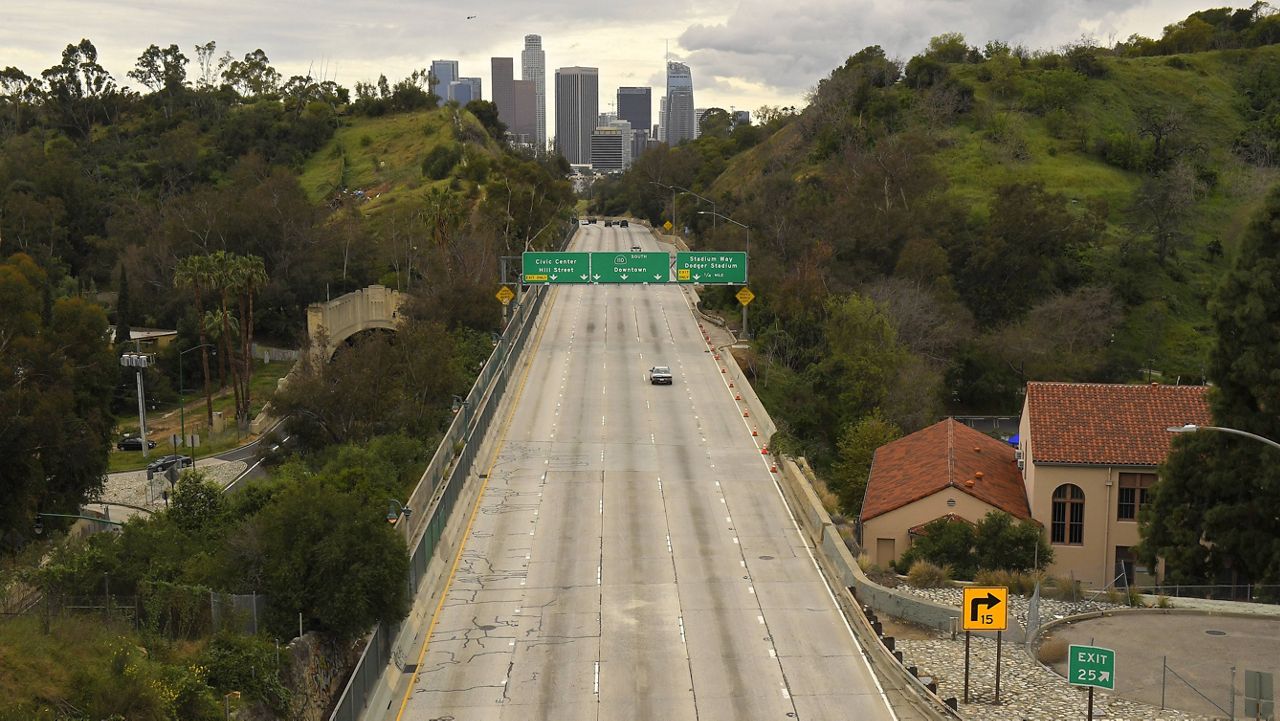LOS ANGELES (CNS) — Southern California has seen a significant decline in vehicle traffic, transit use, and air travel since the start of the COVID-19 pandemic, according to a study released Monday on the coronavirus' impact on planes, trains, and automobiles in the region.
What You Need To Know
- Transit ridership began dropping in March and fell sharply the following month
- Before the pandemic, the SCAG region ranked among the most congested in the country
- The impact on Metrolink ridership was more dramatic — down 90% in April and May from the year before
- Vehicle-miles traveled (VMT) fell by nearly 80% in April from January 2020
The study, conducted by the Southern California Association of Governments, analyzed roadway, rail, and air traffic in Los Angeles, Orange, Ventura, San Bernardino, Riverside, and Imperial counties during the early months of the pandemic.
SCAG, the plannnng organization for the six-county region, plans to continue to monitor and report on the trends over the coming months as the economy reopens and the region shows signs of recovery.
Among the key findings of this first snapshot:
— vehicle-miles traveled (VMT) fell by nearly 80% in April from January 2020, with the sharpest declines in Los Angeles, Orange, and Ventura counties. VMT gradually increased beginning in mid-April as many businesses and public spaces started reopening. Total VMT is now nearing pre-pandemic levels;
— transit ridership began dropping in March and fell sharply the following month — down 65% to 85% from prior year. Bus ridership was down 72% in April, with Orange County showing the steepest decline, 80%. On the rail side, L.A. Metro reported a 68% drop in April, rebounding slightly in May, down 63% from prior year. The impact on Metrolink ridership was more dramatic — down 90% in April and May from the year before;
— air travel suffered immediate and significant impacts — down 65% year-over-year in March and 95% in April; and
— freight traffic experienced mixed results, with the San Pedro Bay ports seeing double-digit declines in containerized cargo due to the lockdown of China's economy, while Ontario International Airport has experienced consistent 20%-plus increases in air cargo traffic as a result of a surge in online shopping.
Roughly one-third of all jobs and economic activity in the six counties is connected — directly or indirectly — to goods movement.
"This snapshot provides valuable insight into how external factors can significantly impact our region's transportation habits," said Rex Richardson, SCAG president and a Long Beach city council member. "The information we gather over the next several months will provide an even clearer picture as we continue to plan for the future."
SCAG leads a variety of planning and policy initiatives aimed at improving mobility, sustainability, economic opportunity, and quality of life in the six-county region. Among those is Connect SoCal and its 2020-2045 Regional Transportation Plan, which identifies $638.6 billion in transportation and related investments over the 25-year period.
Before the pandemic, the SCAG region ranked among the most congested in the country, with research showing the average Angeleno wasting more than 100 hours a year stuck in traffic.
"We don't know what the long-term impact of the pandemic will be, but the combination of fast-rising VMT and continued declines in transit ridership suggests that congestion and problems associated with it could return with a vengeance once the economy fully reopens," said Kome Ajise, SCAG's executive director.
"The land use and transportation strategies of Connect SoCal are now more important than ever before, and we should take the opportunities we have at this time to ensure that, as our economy recovers, our transportation system is there to support our residents, our workers, and our businesses," Ajise added.



